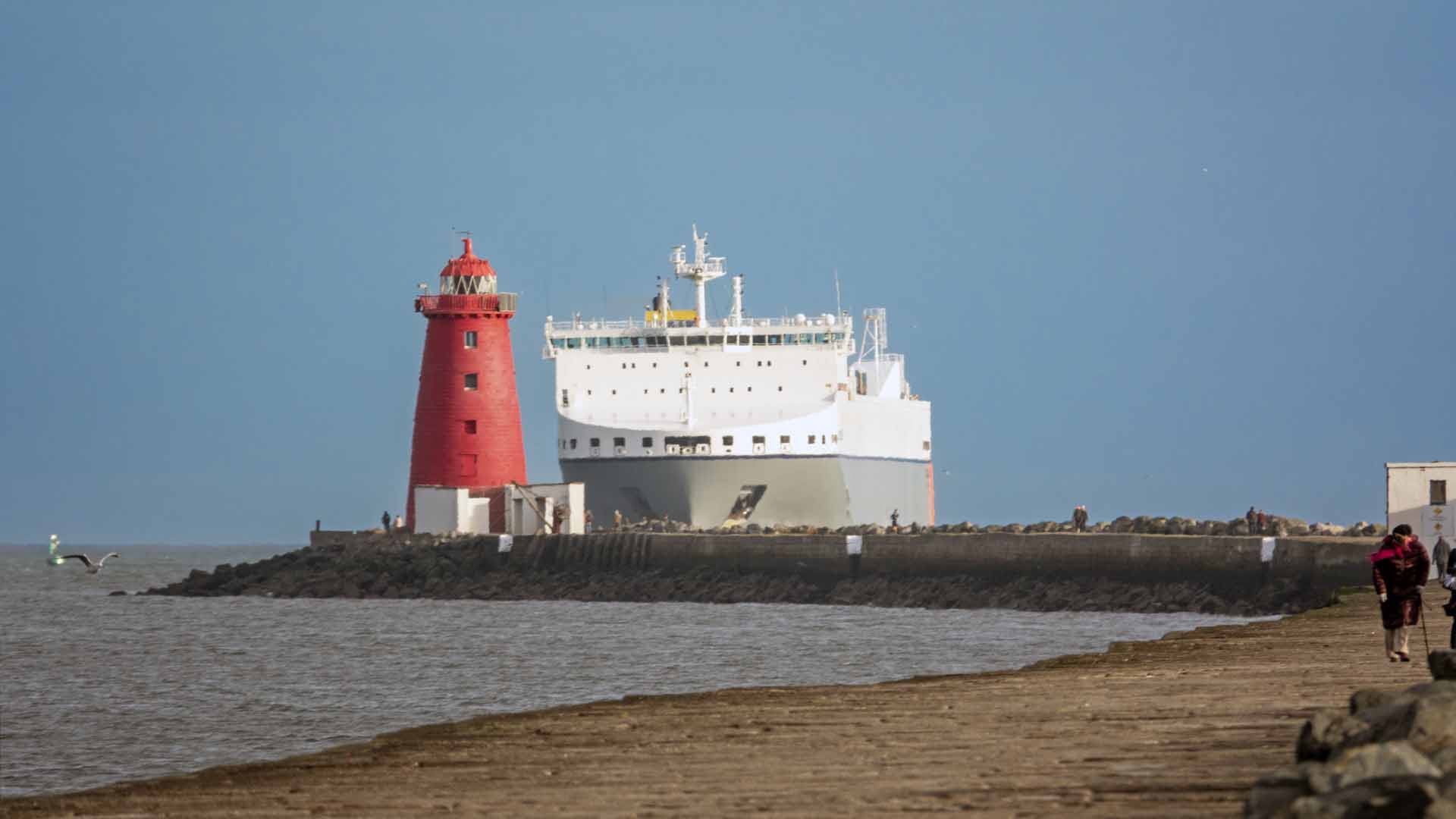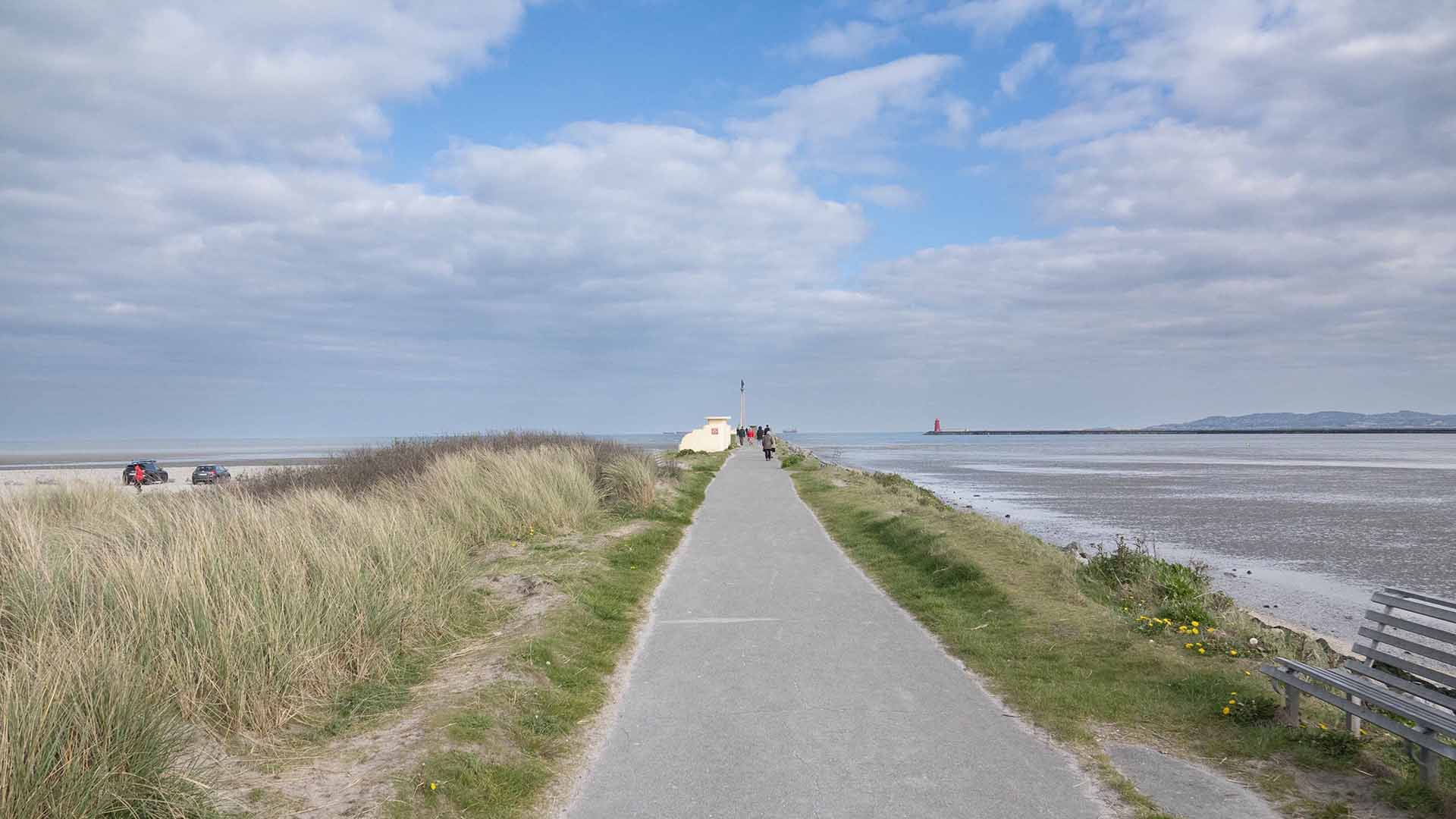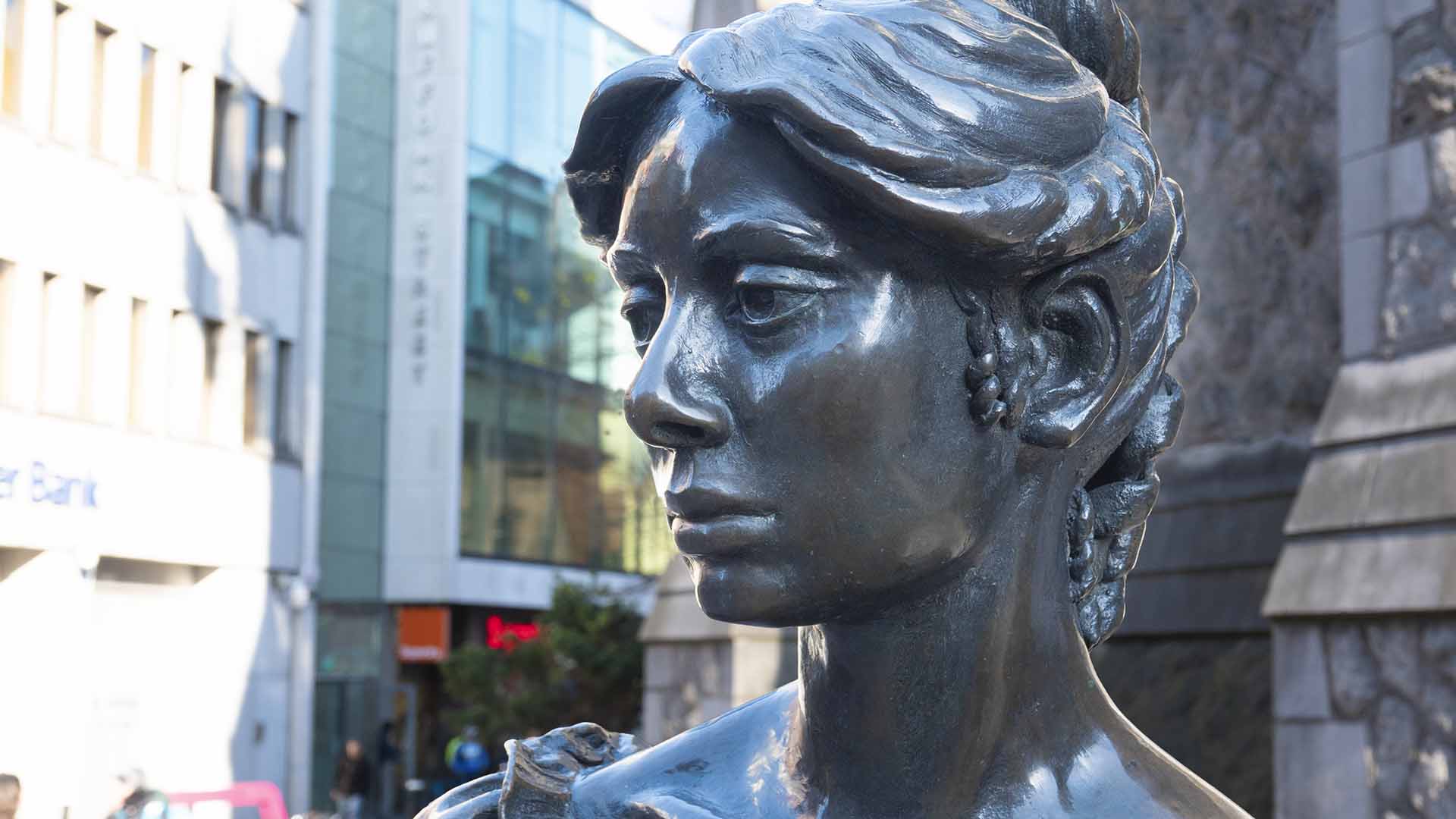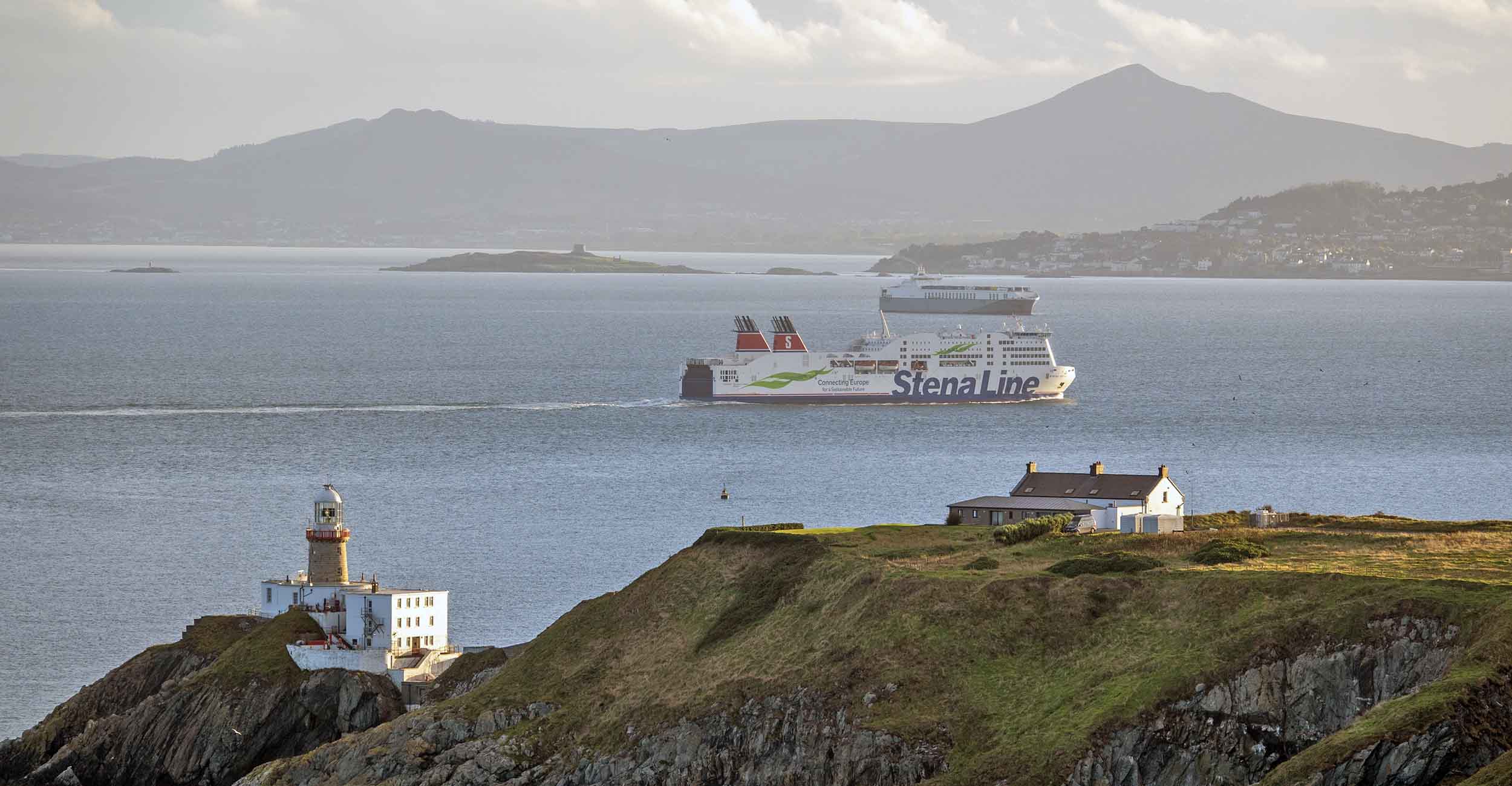Great South Wall
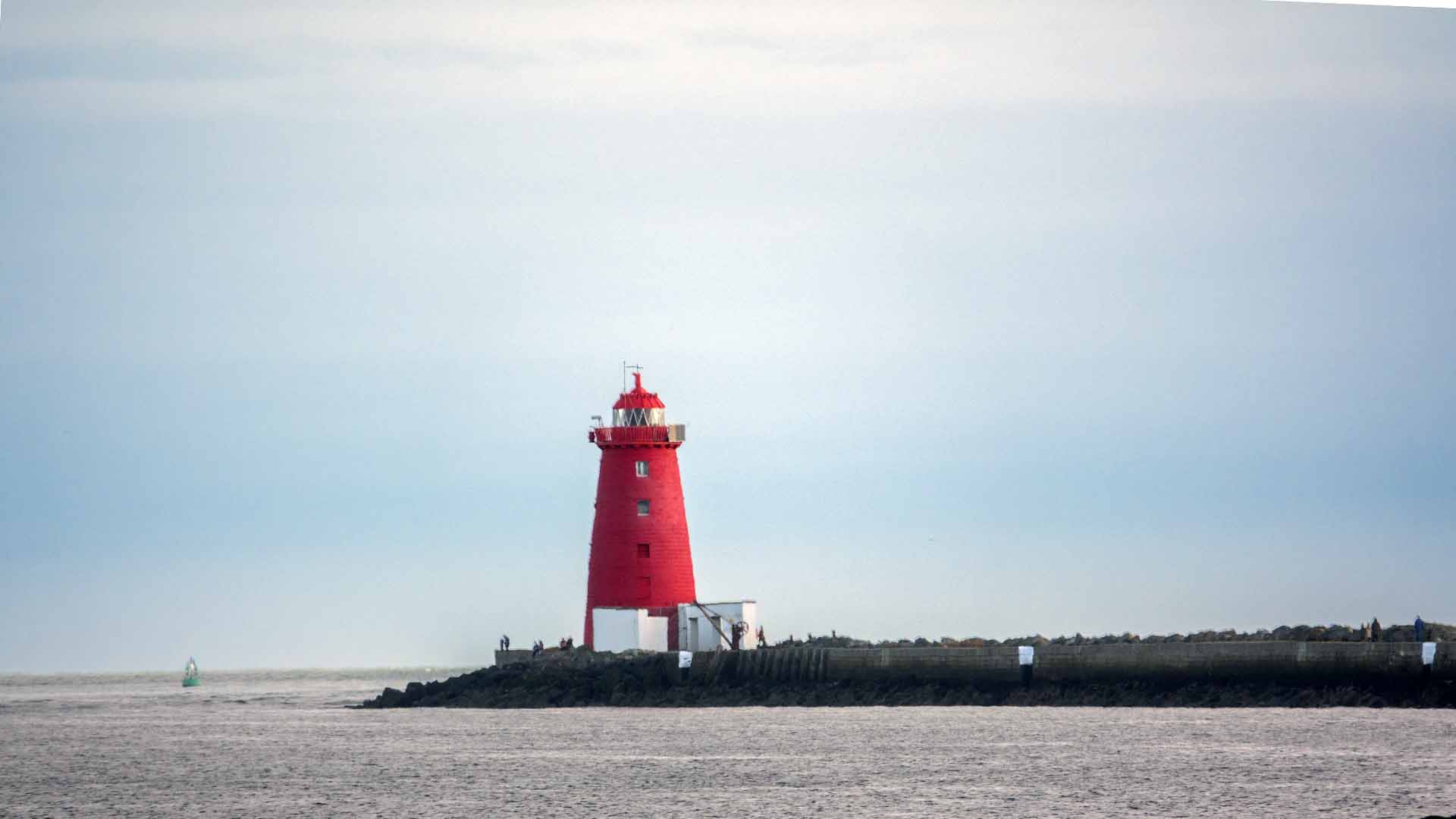
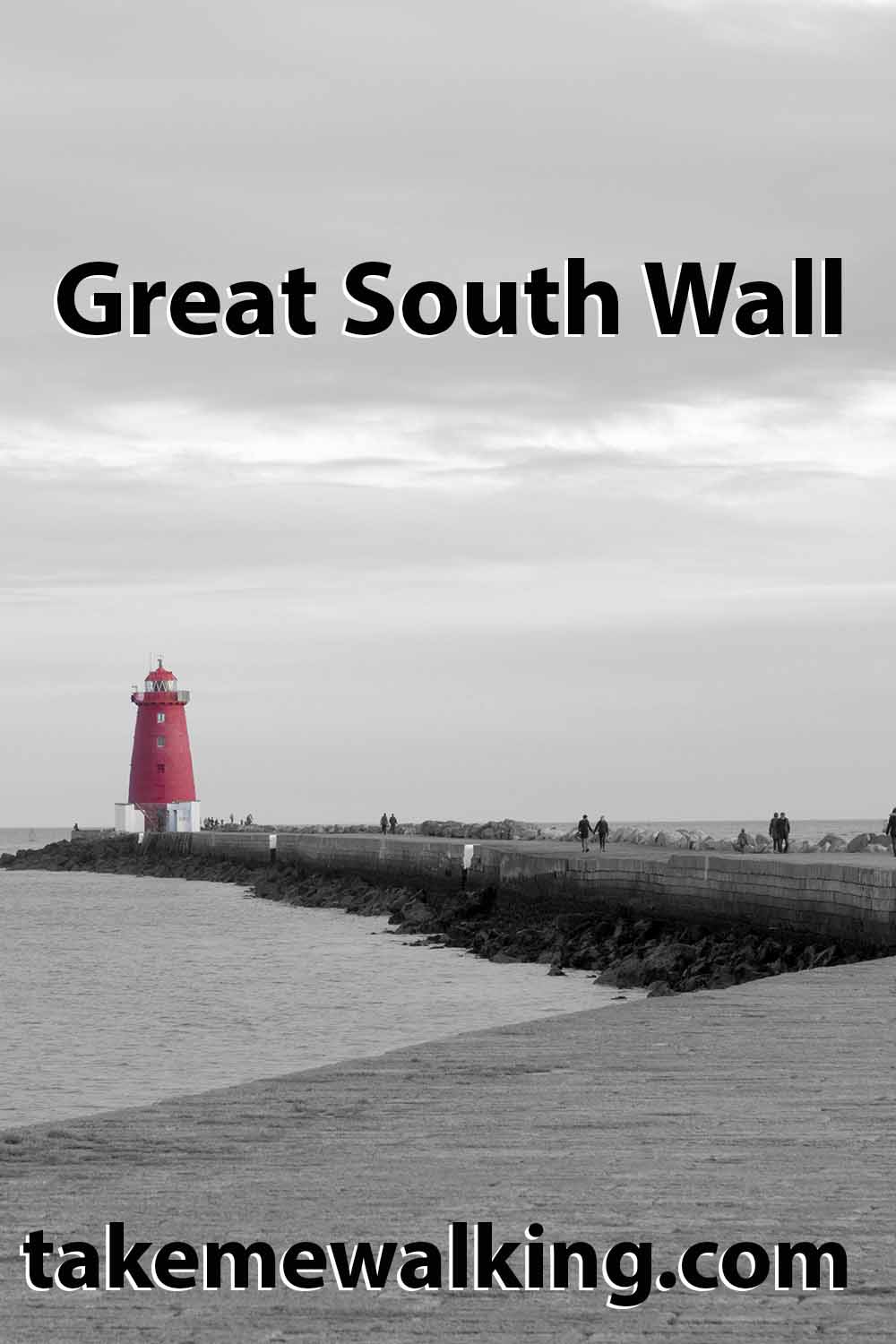
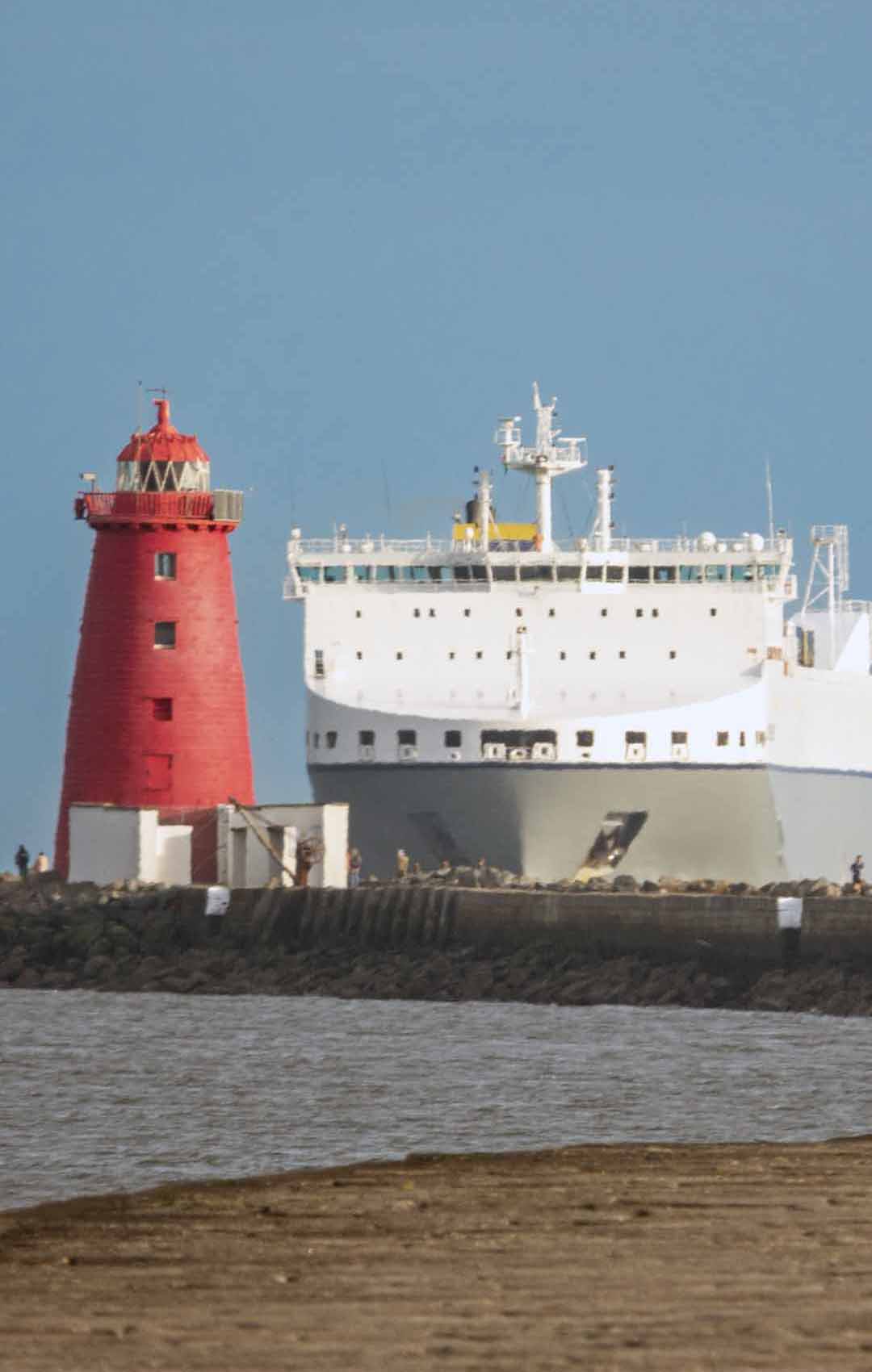
This walk to Poolbeg Lighthouse is ideal for fresh sea air and watching the comings and going at Dublin Port. Large ships are in good supply, being pushed by tugs in this busy port. The north wall is also visible along with the statue of Our Lady of the Sea, mounted on large concrete pillars. The Great South Wall Walk is 3.4k from the car park at Pigeon House Road. This walk to Poolbeg Lighthouse takes about 45minutes. This wall was constructed between 1740 – 1780 and was a massive undertaking for 18th engineering in Ireland.
This walk to Poolbeg Lighthouse is ideal for fresh sea air and watching the comings and going at Dublin Port. Large ships are in good supply, being pushed by tugs in this busy port. The north wall is also visible along with the statue of Our Lady of the Sea, mounted on large concrete pillars. The Great South Wall Walk is 3.4k from the car park at Pigeon House Road. This walk to Poolbeg Lighthouse takes about 45minutes. This wall was constructed between 1740 – 1780 and was a massive undertaking for 18th engineering in Ireland.
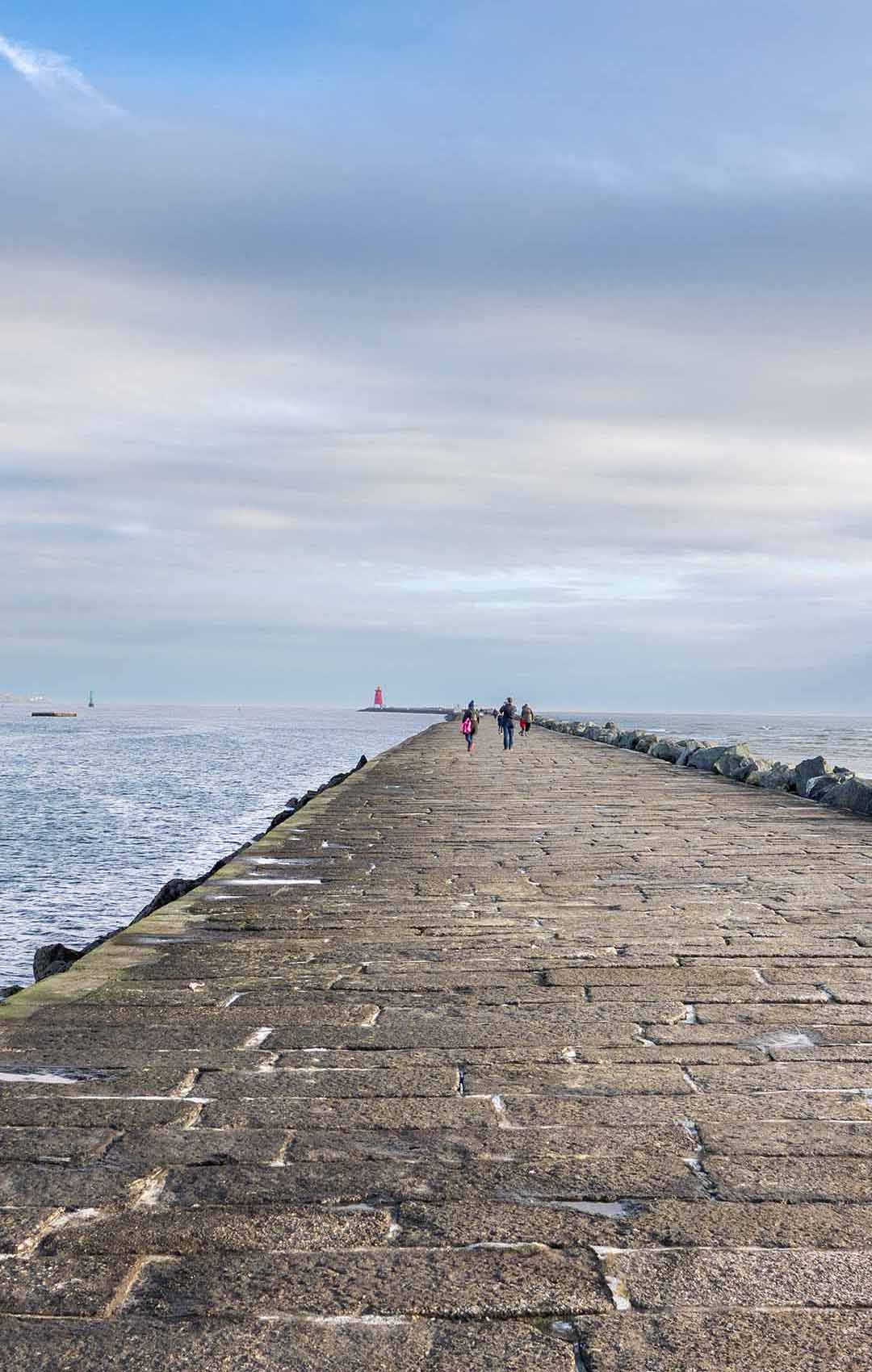
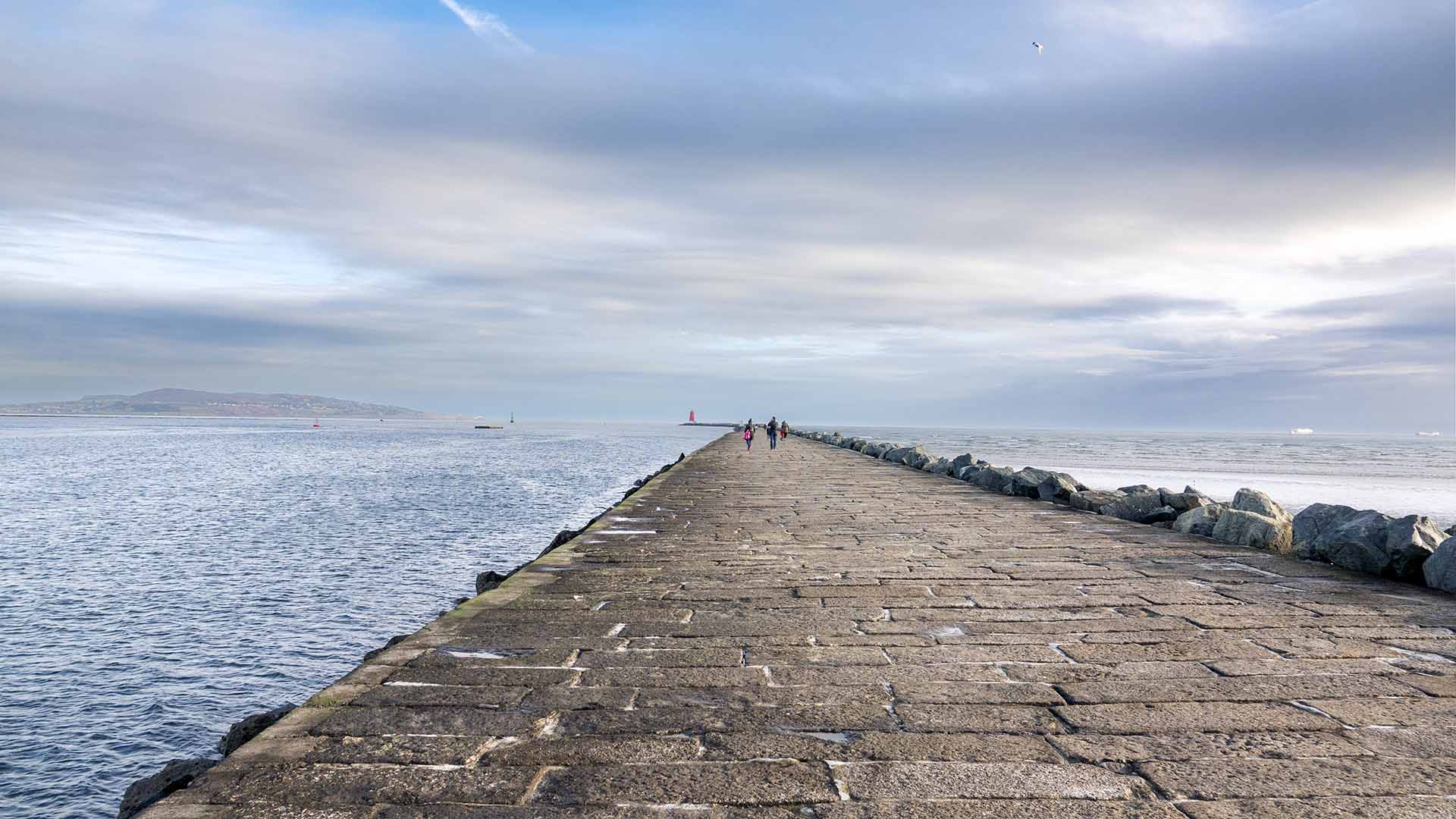
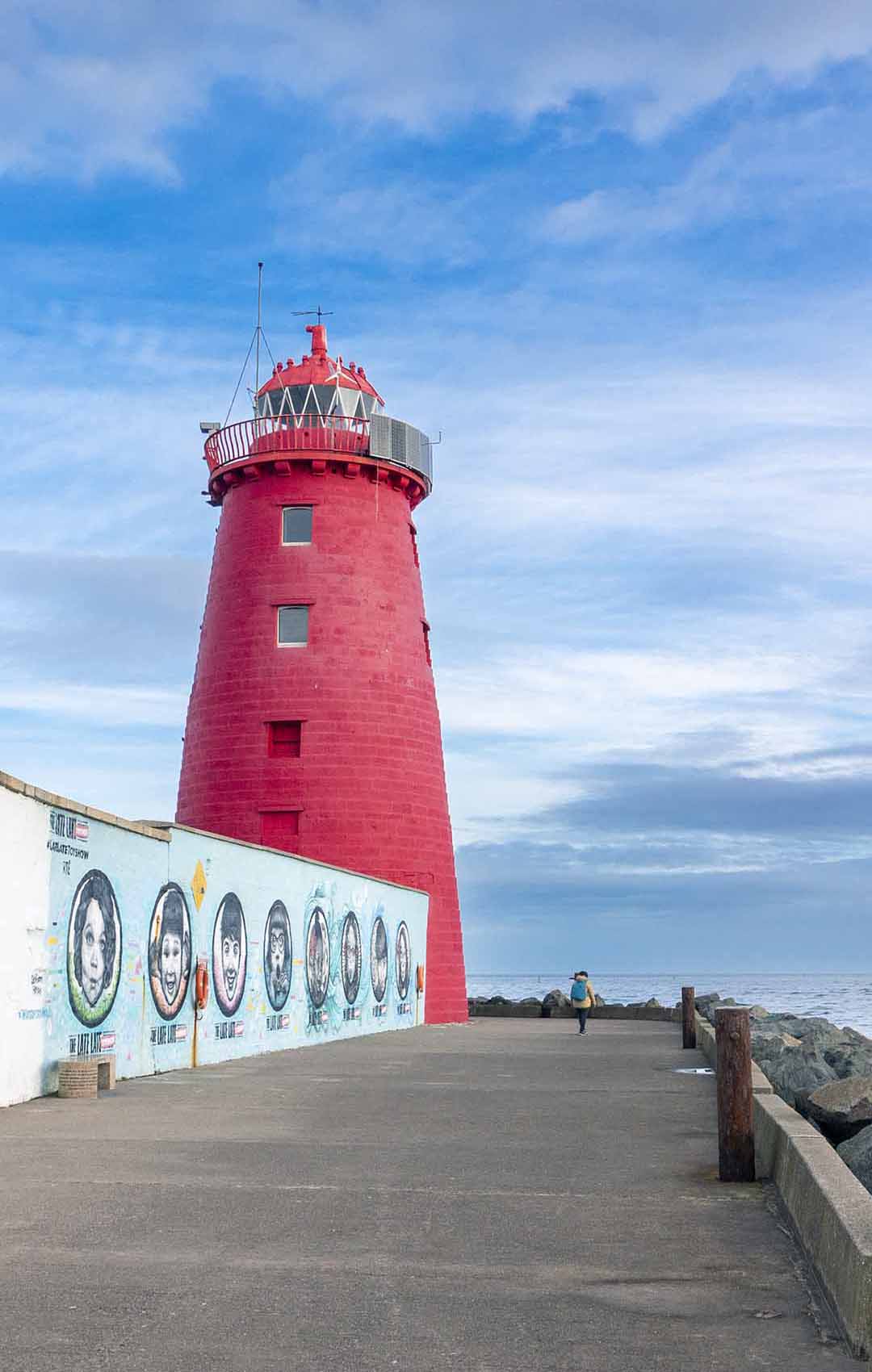
The Great South Wall Dublin
The Great South Wall Dublin
Ask Gemini
The Great South Wall in Dublin is a remarkable feat of engineering and a significant part of Dublin’s maritime history. Here’s a summary of its key aspects:
- Purpose:
- It was constructed to address the issue of silting at the mouth of the River Liffey, which was hindering the passage of large ships.
- It effectively created a channel, allowing Dublin to develop into a major port.
- Construction:
- Construction began in the 18th century, with work spanning several decades.
- It’s primarily built from large granite blocks, sourced from quarries in Dalkey.
- At the time of its completion, it was considered one of the longest seawalls in the world.
- Location and Features:
- It extends for nearly 5 kilometers into Dublin Bay.
- The Poolbeg Lighthouse is located at its end, serving as a crucial navigational aid.
- It is a popular location for people to walk, and take in the views of Dublin bay.
- Historical Significance:
- The wall played a vital role in the development of Dublin’s port and its economic growth.
- It’s a testament to the engineering prowess of the 18th century.
In essence, the Great South Wall is not just a physical structure; it’s a historical landmark that has shaped Dublin’s identity and its connection to the sea.
Ask Gemini
The Great South Wall in Dublin is a remarkable feat of engineering and a significant part of Dublin’s maritime history. Here’s a summary of its key aspects:
- Purpose:
- It was constructed to address the issue of silting at the mouth of the River Liffey, which was hindering the passage of large ships.
- It effectively created a channel, allowing Dublin to develop into a major port.
- Construction:
- Construction began in the 18th century, with work spanning several decades.
- It’s primarily built from large granite blocks, sourced from quarries in Dalkey.
- At the time of its completion, it was considered one of the longest seawalls in the world.
- Location and Features:
- It extends for nearly 5 kilometers into Dublin Bay.
- The Poolbeg Lighthouse is located at its end, serving as a crucial navigational aid.
- It is a popular location for people to walk, and take in the views of Dublin bay.
- Historical Significance:
- The wall played a vital role in the development of Dublin’s port and its economic growth.
- It’s a testament to the engineering prowess of the 18th century.
In essence, the Great South Wall is not just a physical structure; it’s a historical landmark that has shaped Dublin’s identity and its connection to the sea.

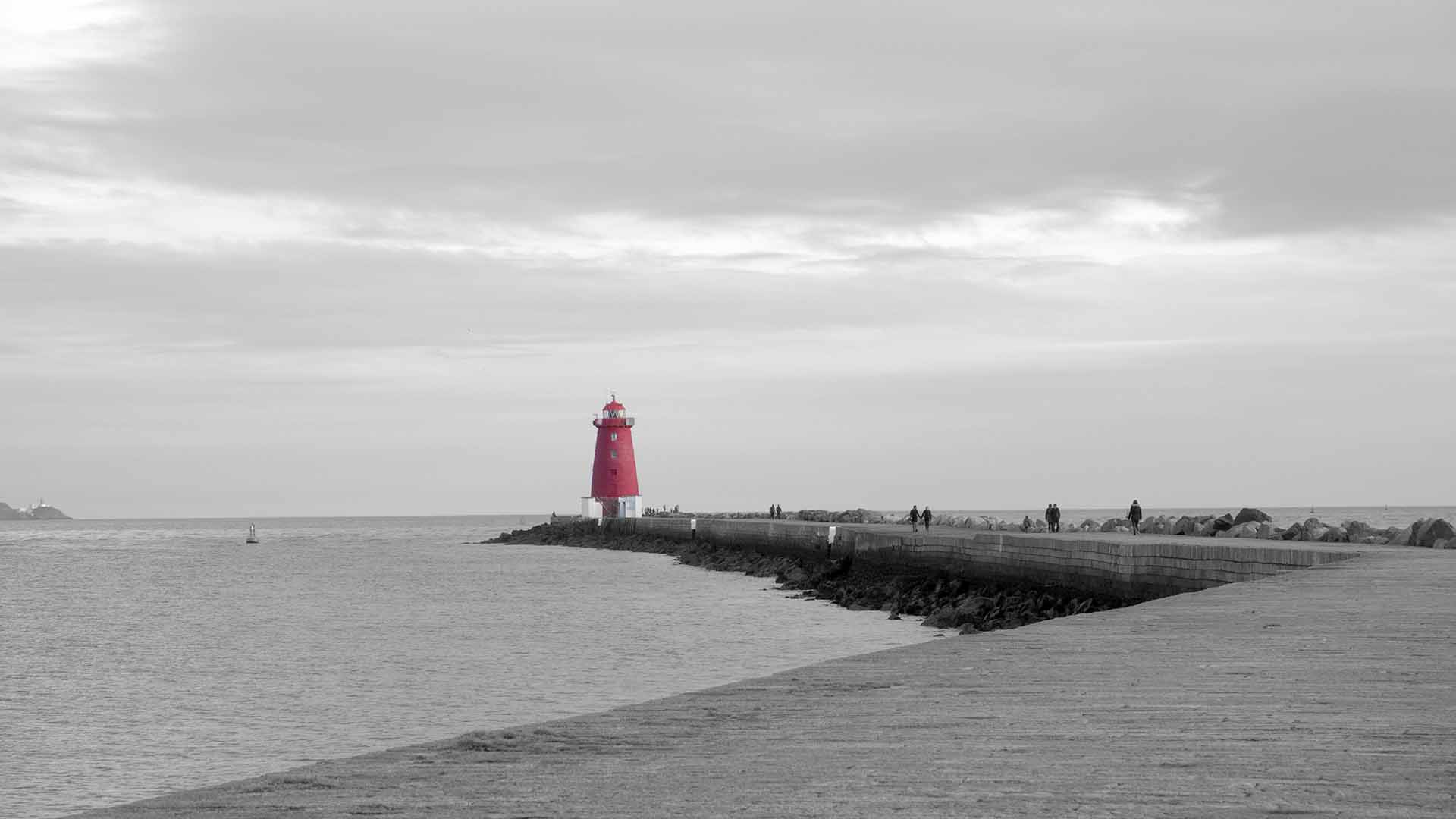
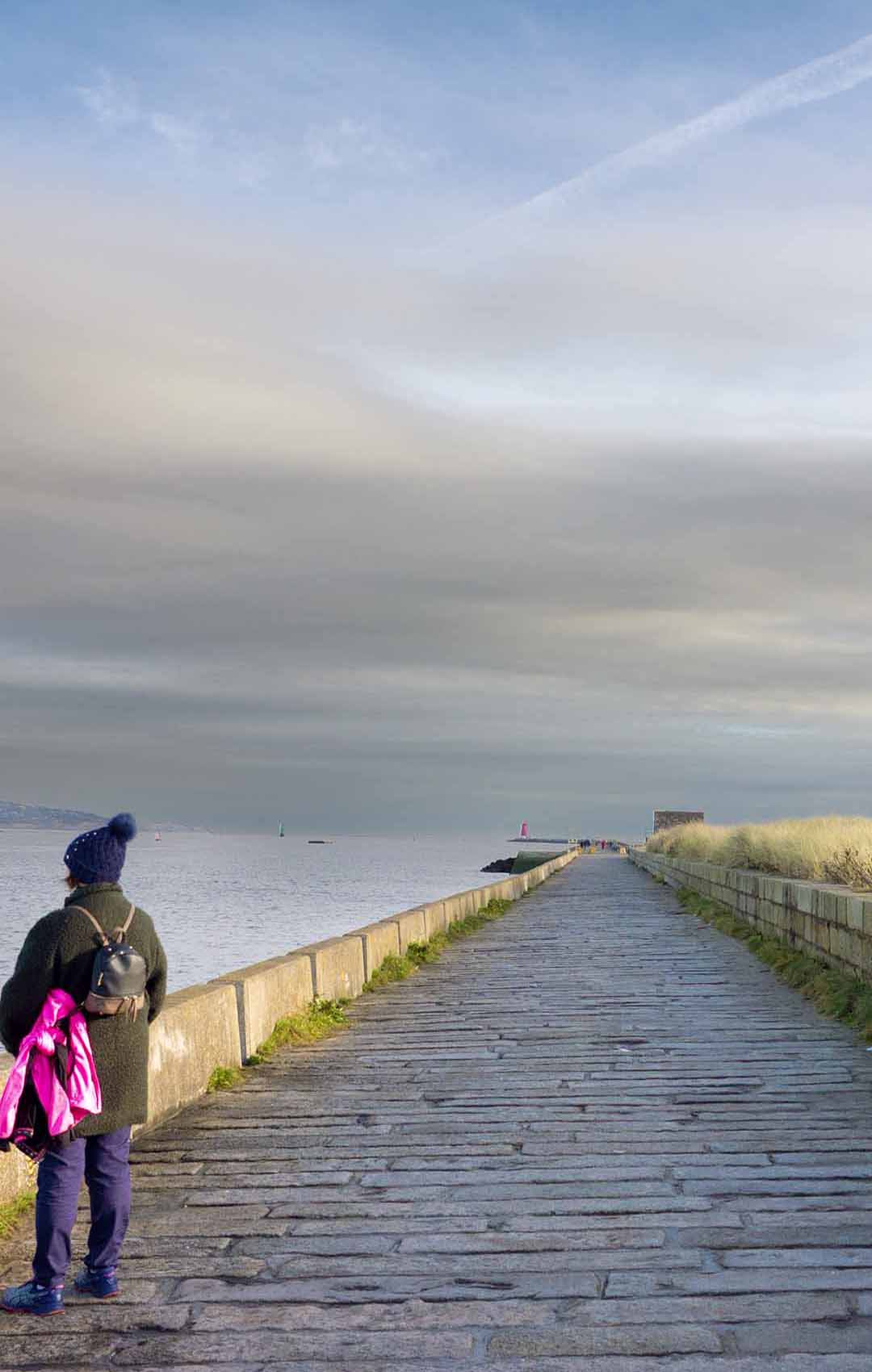
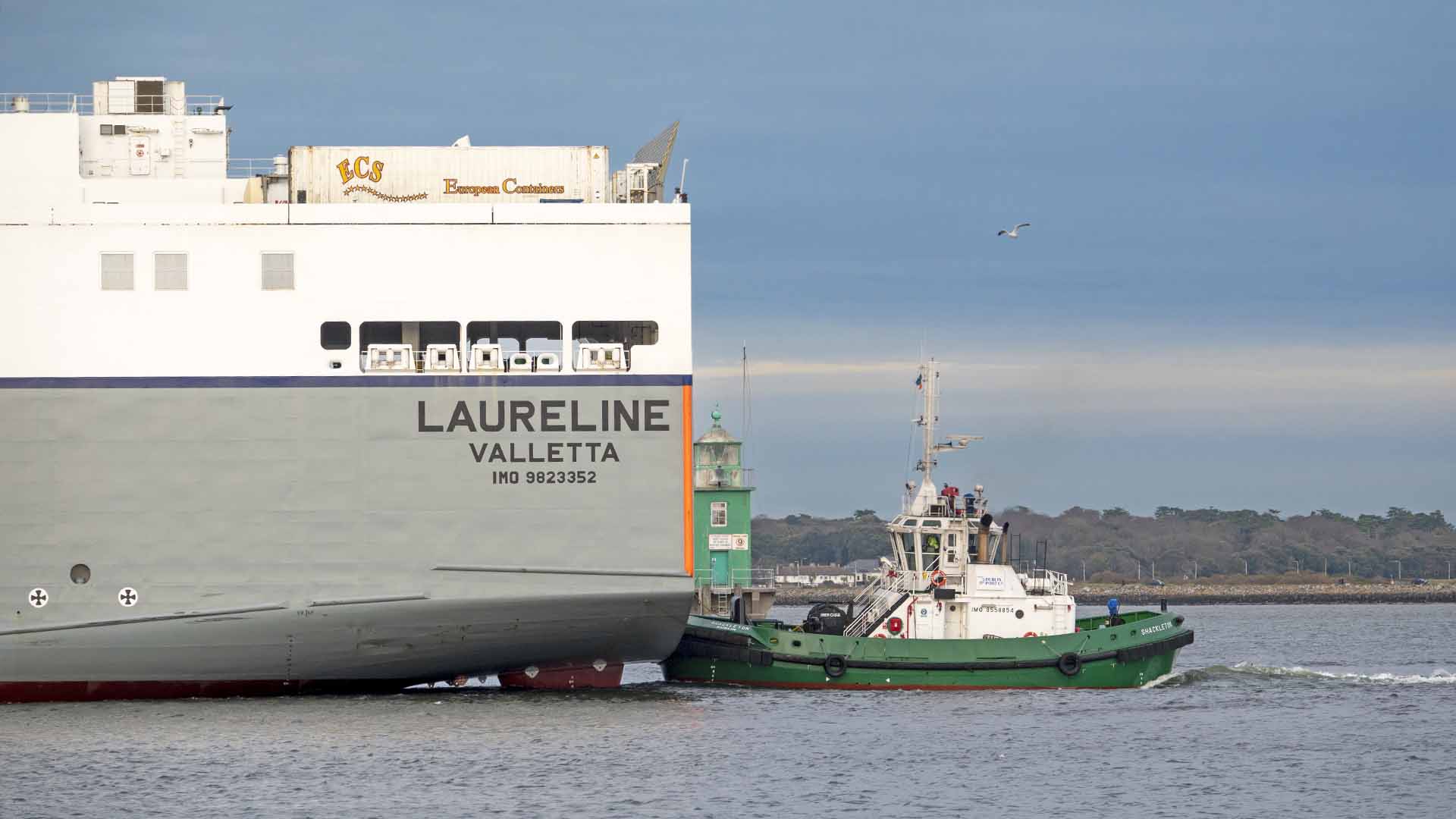
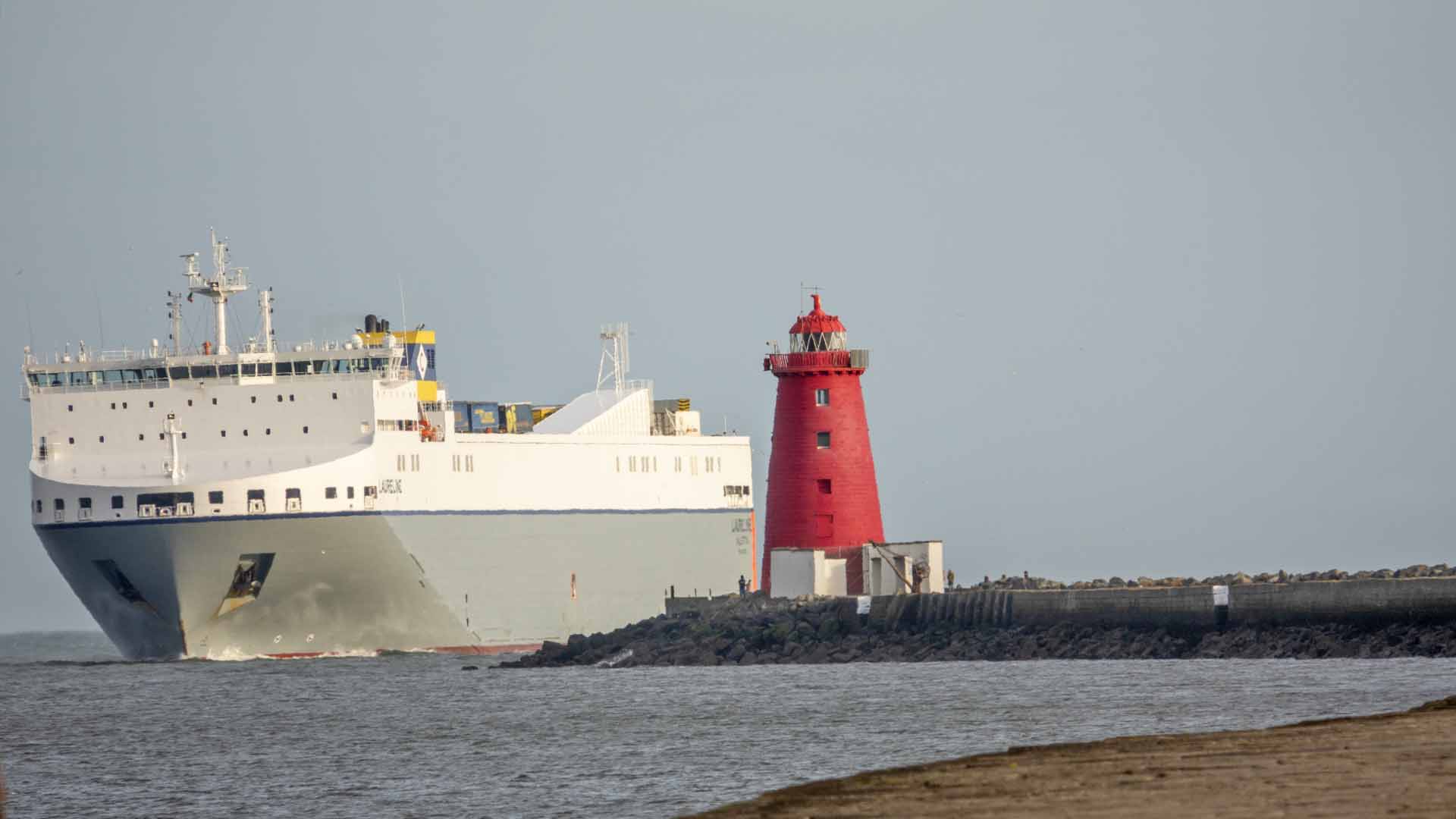
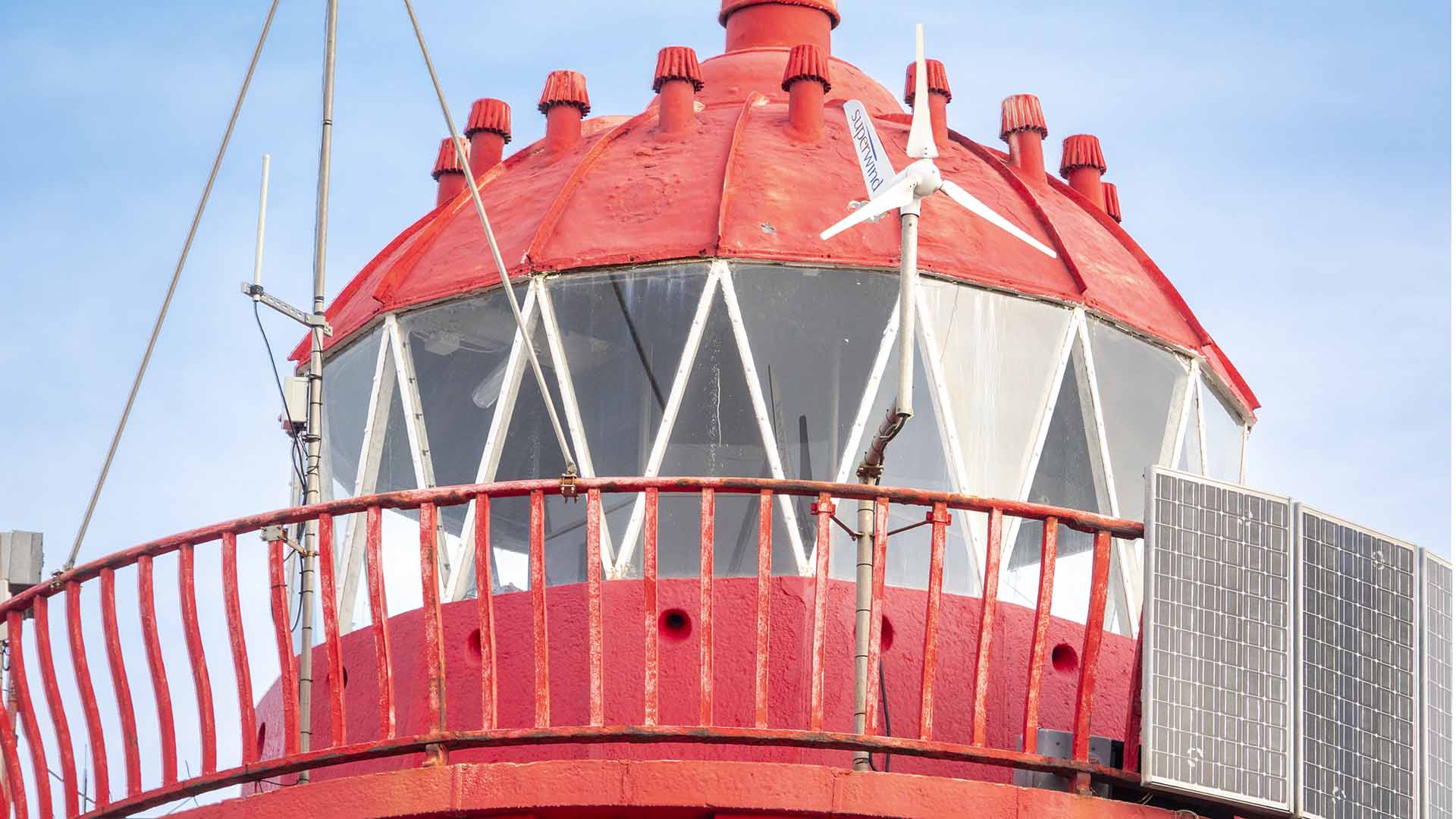

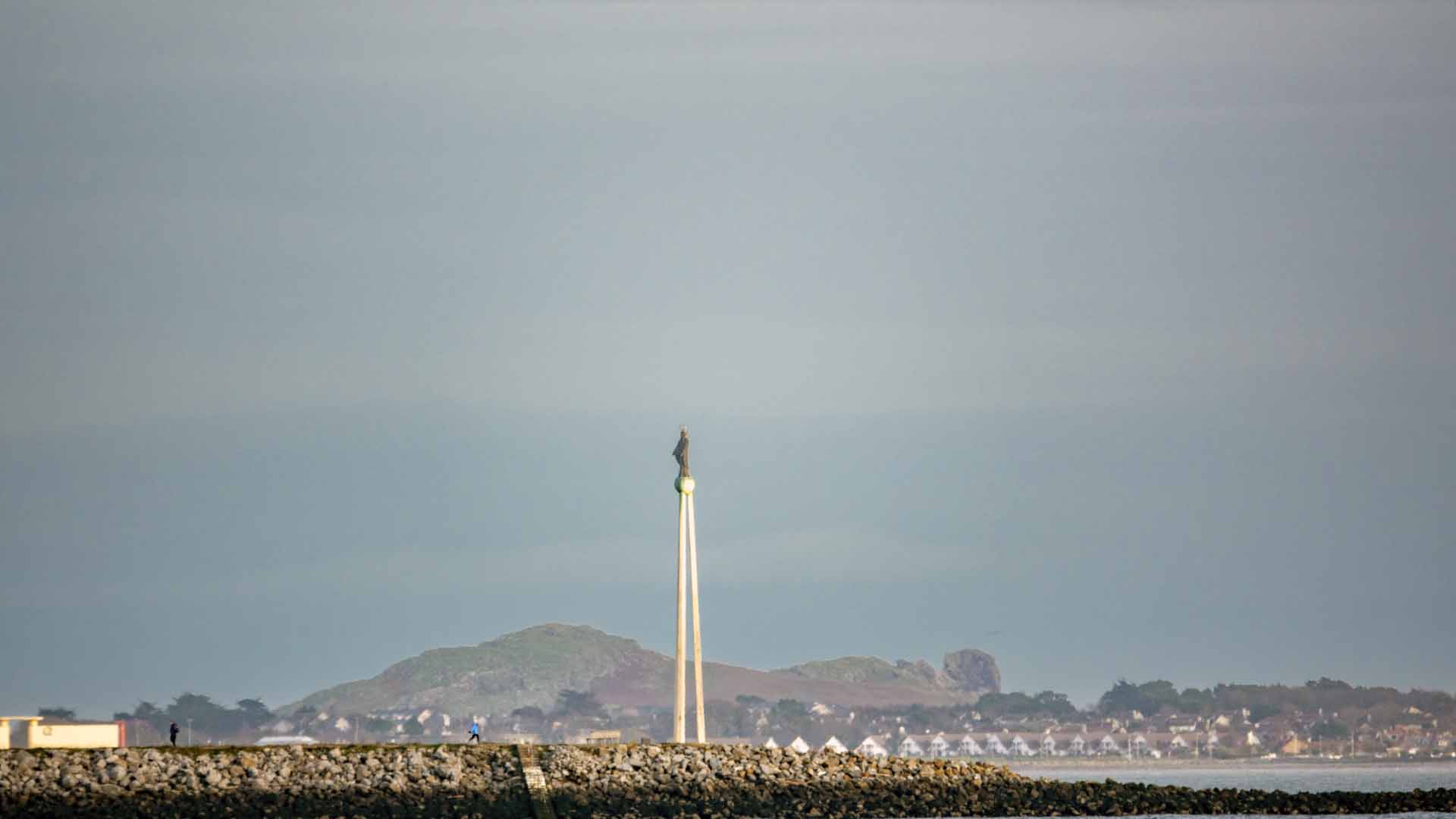
Ask Gemini
Poolbeg Lighthouse
The Poolbeg Lighthouse is a prominent and iconic landmark located at the mouth of the River Liffey in Dublin, Ireland. Here’s a breakdown of key information about it:
- Location:
- It stands at the end of the Great South Wall (also known as the South Bull Wall) in Dublin Bay.
- History:
- The lighthouse was first established in 1767.
- It initially operated using candlepower, a pioneering method at the time.
- It was later converted to oil in 1786.
- The lighthouse was redesigned and rebuilt into its current form in 1820.
- Characteristics:
- It’s a red-painted, cylindrical granite tower.
- It serves as an active aid to navigation for ships entering and leaving Dublin Port.
- Great South Wall:
- The lighthouse is situated on the Great South Wall, a significant feat of engineering.
- At the time of its construction, the wall was considered one of the longest seawalls in the world.
- Visiting:
- It is a popular location for walkers, with routes along the great south wall leading to the lighthouse.
- The location offers great views of Dublin bay.
- Navigational Aid:
- It is vital in aiding safe passage into Dublin Port.
- Dublin Port Company:
- The lighthouse is managed by the Dublin Port Company.
The Poolbeg Lighthouse is not only a functional navigational aid but also a beloved symbol of Dublin’s maritime heritage.
Ask Gemini
Poolbeg Lighthouse
The Poolbeg Lighthouse is a prominent and iconic landmark located at the mouth of the River Liffey in Dublin, Ireland. Here’s a breakdown of key information about it:
- Location:
- It stands at the end of the Great South Wall (also known as the South Bull Wall) in Dublin Bay.
- History:
- The lighthouse was first established in 1767.
- It initially operated using candlepower, a pioneering method at the time.
- It was later converted to oil in 1786.
- The lighthouse was redesigned and rebuilt into its current form in 1820.
- Characteristics:
- It’s a red-painted, cylindrical granite tower.
- It serves as an active aid to navigation for ships entering and leaving Dublin Port.
- Great South Wall:
- The lighthouse is situated on the Great South Wall, a significant feat of engineering.
- At the time of its construction, the wall was considered one of the longest seawalls in the world.
- Visiting:
- It is a popular location for walkers, with routes along the great south wall leading to the lighthouse.
- The location offers great views of Dublin bay.
- Navigational Aid:
- It is vital in aiding safe passage into Dublin Port.
- Dublin Port Company:
- The lighthouse is managed by the Dublin Port Company.
The Poolbeg Lighthouse is not only a functional navigational aid but also a beloved symbol of Dublin’s maritime heritage.
Dublin Port
Location: Situated on the River Liffey where it enters Dublin Bay.
Economic Importance:
- Handles a huge portion of Ireland’s international trade.
- Key for both imports and exports, significantly contributing to the Irish economy.
Trade:
- Deals with a variety of cargo, including containers, roll-on/roll-off (RoRo) freight, and bulk goods.
- Essential for the movement of goods to and from Ireland.
Passenger Traffic:
- Major ferry port with routes to the UK and mainland Europe.
- Also accommodates cruise ships, bringing tourists to Dublin.
History:
- The port has evolved over centuries, playing a crucial role in Dublin’s and Ireland’s development.
- Significant engineering projects like the Great South Wall and the North Bull Wall were crucial for its development.
Administration: Operated by the Dublin Port Company
Dublin Port
Location: Situated on the River Liffey where it enters Dublin Bay.
Economic Importance:
- Handles a huge portion of Ireland’s international trade.
- Key for both imports and exports, significantly contributing to the Irish economy.
Trade:
- Deals with a variety of cargo, including containers, roll-on/roll-off (RoRo) freight, and bulk goods.
- Essential for the movement of goods to and from Ireland.
Passenger Traffic:
- Major ferry port with routes to the UK and mainland Europe.
- Also accommodates cruise ships, bringing tourists to Dublin.
History:
- The port has evolved over centuries, playing a crucial role in Dublin’s and Ireland’s development.
- Significant engineering projects like the Great South Wall and the North Bull Wall were crucial for its development.
Administration: Operated by the Dublin Port Company
Our Lady of the Sea Statue

- A statue called Réalt na Mara (“Our Lady, Star of the Sea”) is located on the North Wall (Bull Wall) Dollymount.
- The statue, erected in 1972, depicts Our Lady with a halo of 12 stars made of Waterford glass.
• • It stands on a globe and is floodlit at night, serving as a landmark for seafarers and port workers.
Our Lady of the Sea Statue

- A statue called Réalt na Mara (“Our Lady, Star of the Sea”) is located on the South Wall (Bull Wall) Dollymount.
- The statue, erected in 1972, depicts Our Lady with a halo of 12 stars made of Waterford glass.
• • It stands on a globe and is floodlit at night, serving as a landmark for seafarers and port workers.




